


A fast and rapid synthesizer melody is heard that goes up and then back down the scale to provide the sound score. This sound is infused with a loud sound of bubbling and popping liquids. A short time has passed and Sarah and McDermott have stealthily made there way over to another one of Dr Logan's laboratories. The camera slowly pans left as a host of scientific items and artifacts come into view. Old human bones which consist of a large femur bone and two humerus bones are visible including a large glass jar that contains zombies internal organs. A large and rotten heart sits to the bottom left of the jar while above is a large mass of other organs. Please revert to the chart below for a full breakdown of a human's internal organs. Kidney's pancreas and lungs are possibly inside the jar suspended in alcohol and formaldehyde.


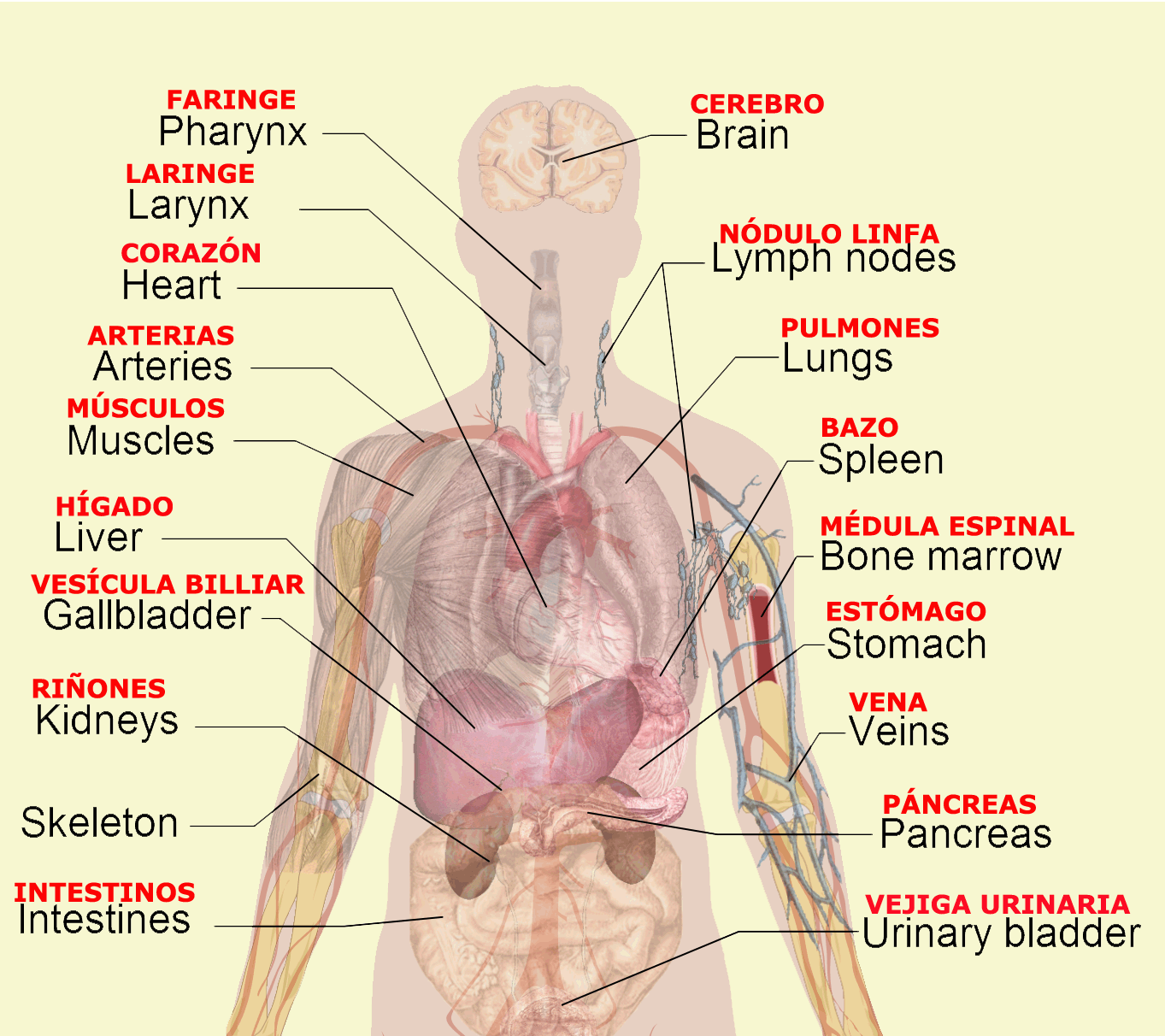


Large and small clear plastic tubing coils and snakes around the laboratory as it feeds oxygen and nutrients to Dr Logans specimens. The camera pans further to reveal a dead zombie that has succumbed to one of Frankenstein's unorthodox experiments. A small amount of fluid has spilled out of the ghouls mouth indicating that Dr Logan had been force feeding this zombie with a large pipe. Similar to Fois Gras. By French law, foie gras is defined as the liver of a duck or goose fattened by force-feeding corn with a feeding tube, a process also known as gavage. Flammable liquids should be avoided by zombies, Complex chemicals such as gasoline, acetone, and ethanol should never be consumed. These liquids have a high degree of flammability and will quickly ignite and consume a zombies dead flesh until nothing is left. Frankenstein has a great knowledge of scientific compounds and formulas and has almost certainly been flushing this ghoul with a cocktail of ingredients. Synthesized human voice echo is heard to provide the sound score

Foie gras is made from the grotesquely enlarged livers of ducks and geese who have been cruelly force-fed. Birds raised for foie gras spend the first four weeks of their lives eating and growing, sometimes in semi-darkness. For the next four weeks, they are confined to cages and fed a high-protein, high-starch diet that is designed to promote rapid growth. Force-feeding begins when the birds are between 8 and 10 weeks old. For 12 to 21 days, ducks and geese are subjected to gavage—every day, between 2 and 4 pounds of grain and fat are forced down the birds’ throats by means of an auger in a feeding tube. The Washington Post reported that the tube “is pushed 5 inches down their throats, and more food than they want is gunned into their stomachs. If the mushy corn sticks … a stick is sometimes used to force it down.” The birds’ livers, which become engorged from a carbohydrate-rich diet, can grow to be more than 10 times their normal size (a disease called “hepatic steatosis”) The mortality rate of birds raised for foie gras has been found to be as much as 20 times higher than that of birds raised normally, and carcasses show wing fractures and severe tissue damage to the throat muscles.
A PETA investigation at Hudson Valley Foie Gras (then known as Commonwealth Enterprises), a production facility in New York, revealed that workers were expected to force-feed 500 birds three times a day. A worker told one of PETA’s investigators that he could feel tumor-like lumps, caused by force-feeding, in some ducks’ throats. One duck had a maggot-covered neck wound that was so severe that water spilled out of it when he drank. Workers routinely carried ducks by their necks, causing them to choke and defecate in distress. One veterinarian who accompanied the police on their raid of Commonwealth noted, “Many of the ducks … were lame or unable to walk without using their wings for support. Some ducks moved by pushing their bodies along the floor.” The same veterinarian said, “All of the birds in the force-feeding area had dirty, ragged, incomplete plumage, yet none were attempting to preen. Only severely stressed or ill ducks allow their plumage to deteriorate to [such a] degree. … Normal ducks keep their feathers in near-perfect condition.” (livers are easily torn by even minor trauma)” and at one duck’s “laceration of the liver with hemorrhage into the body cavity.” A New York Times reporter who visited Sonoma Foie Gras in California found that young ducks had their beaks clipped and that birds “were so fat [that] they moved little and panted.” The reporter also noted that at the age of 12 to 15 weeks, birds were confined to dark sheds that had “standing water … deep enough to suggest a drainage problem.



McDermott and Sarah have entered into the laboratory on there own devises having discovered that Dr Logan is not there. A small computer screen displays some neon blue text in the far left of the laboratory and there is a large chalk board with diagrams of the human brain drawn onto it. McDermott is silent as he slowly and cautiously walks around the room in his quest for knowledge. The loud bubbling sound is emanating from a large fluorescent green tank of water that Frankenstein uses for his experiments. Bill blinks as he takes short steps in his quest to find out more on Dr Logan.

A strange metal instrument sits on top of the water tank and is used to electrify the water particles that are suspended in the green fluid. Bill stops in front of the bright green tank as his curiosity gets the better of him, Bill slowly looks down and inside the tank to see what he can see.

To McDermotts utter shock and horror he focuses his eyes on a putrefied zombie child that is being fed a concoction of ingredients in an attempt to keep it alive. One pipe has been stuck down it's throat while another has been inserted into it's anus passage. A black glove and a pair of surgical scissors have been lazily left inside the tank as Frankenstein scuttles around from patient to patient. McDermott is shocked to the core and is starting to have serious doubts and questions for the unethical Dr. Bill say' slowly "Jesus God Almighty" as he stares in at the horrific sight. Comparing the scissors to the length of the specimen indicates that this ghoul was about 5 years old when he became infected.

Sarah has turned her head as she looks on over towards Bill, Sarah looks down at the child zombie that has been suspended in water as she say's "The resident surgeon (Looks back to Bill) has been burning the midnight oils."

Sarah immediately turns back around as she looks down into a drawer in her search for Morphine for Miguel. A loud sound of rumbling metal is heard as Sarah pulls open the drawer a little more, More sounds of rummaging are heard as Sarah searches the contents of the drawer.

McDermott suddenly looks away from the bubbling tank having seen enough already, Bill closes his eyes in an attempt to shut out the horror in front of him.


Bill is feeling rather affected by the ghastly sight as he raises his right hand and begins to cross himself while in deep thought and contemplation. Bill first touches his forehead with his thumb (In the name of the FATHER) before touching the right side of his right eye, (And of the SON) Bill then touches his mustache just below the center of his nose (And of the Holy) before waving his thumb in front of his lip, (GHOST, AMEN) Bill has finished his short yet meaningful association with religion as he rapidly lowers his hand and reopens his eyes. Depending on your religion relates to how one can cross themselves, You can also use your chest to complete the holy movement. Bill stands silent and motionless for a short moment before walking off to the other side of the ghoulish laboratory.
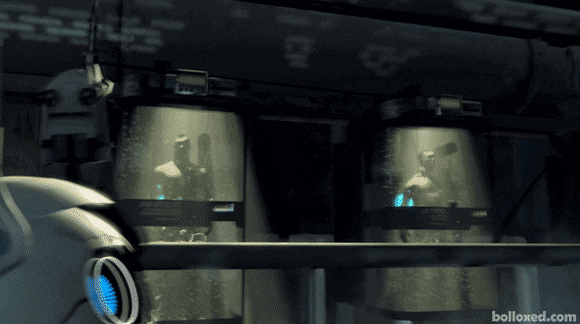
SUSPENDED ANIMATION
Suspended animation has been understood as the slowing or stopping of life processes by exogenous or endogenous means without terminating life itself. Breathing, heartbeat and other involuntary functions may still occur, but they can only be detected by artificial means. For this reason, this procedure has been associated with a lethargic state in nature when animals or plants appear, over a period, to be dead but then can wake up or prevail without suffering any harm. This has been termed in different contexts hibernation, dormancy or anabiosis (this last in some aquatic invertebrates and plants in scarcity conditions). This condition of apparent death or interruption of vital signs may be similar to a medical interpretation of suspended animation. It is only possible to recover signs of life if the brain and other vital organs suffer no cell deterioration, necrosis or molecular death principally caused by oxygen deprivation or excess temperature (especially high temperature). Some examples of people that have returned from this apparent interruption of life lasting over half an hour, two hours, eight hours or more while adhering to these specific conditions for oxygen and temperature have been reported and analysed in depth, but these cases are not considered scientifically valid. The brain begins to die after five minutes without oxygen; nervous tissues die intermediately when a "somatic death" occurs while muscles die over one to two hours following this last condition. It has been possible to obtain a successful resuscitation and recover life in some instances, including after anaesthesia, heat stroke, electrocution, narcotic poisoning, heart attack or cardiac arrest, shock, newborn infants, cerebral concussion, or cholera.
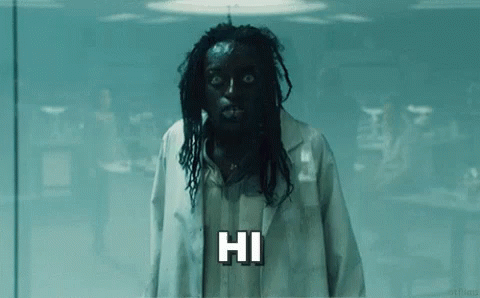

Supposedly, in suspended animation, a person technically would not die, as long as he or she were able to preserve the minimum conditions in an environment extremely close to death and return to a normal living state. An example of such a case is Anna Bagenholm, a Swedish radiologist who allegedly survived 40 minutes under ice in a frozen lake in a state of cardiac arrest and survived with no brain damage in 1999.


Anna Bagenholm
Anna Bagenholm

Anna Bagenholm
Anna Elisabeth Johansson Bågenholm (born 1970) is a Swedish radiologist from Vanersborg, who survived after a skiing accident in 1999 left her trapped under a layer of ice for 80 minutes in freezing water. During this time she became a victim of extreme hypothermia and her body temperature decreased to 13.7 °C (56.7 °F), one of the lowest survived body temperatures ever recorded in a human with accidental hypothermia. Bågenholm was able to find an air pocket under the ice, but suffered circulatory arrest after 40 minutes in the water. After rescue, Bågenholm was transported by helicopter to the Tromso University Hospital, where a team of more than a hundred doctors and nurses worked in shifts for nine hours to save her life. Bågenholm woke up ten days after the accident, paralyzed from the neck down and subsequently spent two months recovering in an intensive care unit. Although she has made an almost full recovery from the incident, late in 2009 she was still suffering from minor symptoms in hands and feet related to nerve injury, Bågenholm's case has been discussed in the leading British medical journal The Lancet, and in medical textbooks. When Bågenholm was pulled out of the water, her pupils were dilated, her blood was not circulating, and she was not breathing. Falkenberg and Næsheim, both doctors, began giving her cardiopulmonary resuscitation (CPR). The rescue helicopter soon arrived and Bågenholm was brought to the Tromso University Hospital in an hour. The helicopter emergency team continued to give her CPR during the flight, and she was ventilated with oxygen. She was also treated with a defibrillator, but to no effect. Bågenholm was brought to the operating theatre, where a team of more than a hundred doctors and nurses worked in shifts for nine hours to save her life. Despite the severe damage to Bågenholm's body, no permanent brain damage was diagnosed. Gilbert commented on this: "Her body had time to cool down completely before the heart stopped. Her brain was so cold when the heart stopped that the brain cells needed very little oxygen, so the brain could survive for quite a prolonged time." Bagenholm awoke paralyzed from the neck down but amazingly she recovered from this.
Other cases of hypothermia where people survived without damage are:
John Smith, a 14-year-old boy who survived 15 minutes under ice in a frozen lake before paramedics arrived to pull him onto dry land and saved him.
Mitsutaka Uchikoshi, a Japanese man who survived the cold for 24 days in 2006 without food or water when he fell into a state similar to hibernation
Paulie Hynek, who, at age two, survived several hours of hypothermia-induced cardiac arrest and whose body temperature reached 64 °F (18 °C)
Erica Nordby, a toddler who in 2001 was revived after two hours without apparent heartbeat with a body temperature of about 61 °F (16 °C)

John Smith

Mitsutaka Uchikoshi

Paulie Hynek

Paulie Hynek remembers his lucky escape.
EAU CLAIRE, Wis. (WCCO) — On a winter night, most children are warm in their beds. But 10 years ago, a mother and father awoke to discover their 2-year-old was missing. He’d wandered out of their farmhouse near Eau Claire in the middle of the night. By the time anyone realized the boy was missing, he was seemingly dead. His body temperature had dropped to 60 degrees. The human heart stops at 72. So what happened next is what some consider a miracle. Others say it’s just the spirit inside a young boy named Paulie. Growing up on a dairy farm, life’s lessons are all around. The work day starts early. Cows have to be milked. Heifers need to be fed. Many hands make lighter work for Mark and Cindy Hynek. But the job’s not done until mom says so. “Go get ready for school and we’ll see you later,” said Cindy. “Have a good day. Bye.” Paulie Hynek is pretty much like any of his five brothers and sisters. Except for one thing that makes him different. Paulie has learned one of the hardest lessons in life. He died once.
“911 what’s your emergency,” said the operator in 2001.
“I got a little boy that went out in the middle of the night. And he went outside and I don’t know if he’s alive or dead,” Mark told the operator.
Little Paulie was just 2-years-old when he wandered outside looking for his mom while everyone was asleep. It was 2 degrees below zero when his dad found him lying in a snow bank at about 6:30 in the morning.
Paulie wasn’t breathing.
“He was lifeless. When I picked him up, he was limp,” said Mark.
“There’s nothin, there’s nothin’. I’ve lost my boy,” he told the 911 operator.
“We can help him. We can see if we can help him,” said the operator. “Sometimes the cold will slow down their system and we can help him.”
The Mayo Clinic medical helicopter got Paulie to the Luther Hospital in Eau Claire. And the emergency crew just wasn’t ready to give up on this young life.
“He was so profoundly cold,” said Brad Grewe, Director of the Emergency Room.
Even though there was no heartbeat, no breathing and no brain activity.
“You never really can pronounce somebody dead unless they’ve been warmed up,” said Grewe.
They started with warm fluids and IVs. Then Paulie’s blood was circulated through a heart-lung machine. “You can explain parts of it through science,” said Robert Weichmann, the cardiac surgeon who was as surprised as anyone when Paulie’s heart came back to life. “There had to be a miraculous event to allow this to happen and be what it is today,” said Weichmann. “There had to be some wonderful spirit inside this young boy.”
The 2-year old boy who survived a night in the cold is now a typical sixth-grader.
Doctors worried that his internal organs or brain might be damaged because blood flow had stopped for nearly three hours.
But today Paulie has got good grades and even plays on the football team.
In fact, aside from the incision doctors made in his chest, the only evidence he went through what he did is some minor damage to his hands. “The end of my fingers here, the nerves they ain’t as strong as all the other ones,” he said. “This one was worse; this one was underneath my chest.” “They wanted to see what 10 years would be like too. Then we could really see a big difference from 2 to 12,” said Mark. “And he’s perfect.” “He was happy-go-lucky, fun, inventive and stuff like that,” said Cindy. “He’s the same kid now, I think, he was back then.” And even though Paulie just celebrated turning 12 in January.
“We celebrate his life, or the life you know, life in general,” said Cindy. “We celebrate the anniversary. We call it Paulie’s anniversary.”
“We remember. Don’t forget,” said Mark.
“One night I woke up. I was looking for my mom and I didn’t know where she was. And then I went outside looking for her and I got too cold. And then I just died. And then the rest of it is history,” said Paulie.
To celebrate his life this Feb. 27, Paulie said he wants to go bowling.
Joan Gilbertson, Producer
Reported on February 3, 2011 at 11:16 pm


Mitsutaka Uchikoshi went missing on Mt Rokko in western Japan on October 7 after a barbecue with colleagues. Rather than joining them for the return trip by cable car, the 35-year-old decided to walk down the mountain, but lost his way, slipped in a stream and broke his pelvis. "On the second day, the sun was out, I was in a field, and I felt very comfortable. That's my last memory," he said, shortly before being discharged from Kobe city general hospital on Tuesday. "I must have fallen asleep after that." When a passing climber found him 24 days later, Mr Uchikoshi's body temperature had fallen to just 22C (72F), he had a barely discernable pulse and he was suffering from multiple organ failure and blood loss. Doctors who treated Mr Uchikoshi believe he lost consciousness after his fall and that his body's natural survival instincts kicked in, sending him into a state akin to hibernation as the temperature on the mountain dropped as low as 10C. "He fell into a state similar to hibernation and many of his organs slowed, but his brain was protected," Dr Shinichi Sato, head of the hospital's emergency unit, told reporters. "I believe his brain capacity has recovered 100%." Doctors said they did not expect him to experience any lasting ill-effects. Mr Uchikoshi said he could not remember anything after the second day of his ordeal on the mountain, a popular spot for hikers and picnickers. One report that emerged while he was still in hospital said he had sipped bottled water and barbecue sauce before falling unconscious. Experts say it remains unclear how Mr Uchikoshi managed his extraordinary feat of survival with his metabolism almost at a standstill.
Erica Nordby with her mother.
Erica Nordby with her mother.
Erika Nordby (born February 2000), also known as Baby Erika, Miracle Baby and Canada's Miracle Child, is a Canadian originally from Edmonton, Alberta known for having been revived after spending two hours without a heartbeat due to hypothermia. Nordby, then a 13-month old toddler, had left her heated house nearly naked, while the air temperature was −24 °C (−11 °F).
Erika and her mother, 26-year-old Leyla Nordby, were spending the night of 22/23 February 2001 at a friend's home in Edmonton.[1] Leyla and an unnamed friend had been out earlier in the night, leaving a relative of the friend to babysit. When the two returned to the home, the babysitter left through the back door, which had a broken latch. In the early hours of the morning, 13-month-old Erika left the house alone wearing only a diaper. The temperature outside was approximately −24 °C (−11 °F).[4] As the girl customarily had a bottle around 2 am, her mother became concerned when she awoke at 3 am and Erika was not beside her in bed. Leyla found her in a snowbank shortly thereafter by following footprints leading away from the back door. She brought Erika inside and called an ambulance, and attempted CPR and mouth-to-mouth resuscitation, but was unsuccessful. Paramedics were unable to intubate at the scene due to Erika's condition. Erika was taken to Stollery Children's Health Centre. Leyla was detained by police for five hours on suspicion of child neglect, after which she went to the hospital. Upon her arrival at Stollery, Erika was considered to be clinically dead: she had been without a pulse for approximately two hours. She had no vital signs and had a core body temperature of about 16 °C (61 °F). This compares to a normal body temperature of 37 °C (99 °F); the lowest survived human body temperature resulting from accidental (not medically controlled) hypothermia was 13.7 °C (56.7 °F). Erika's heart resumed beating after she was placed under a warming blanket. Doctors suggested the cold had placed her into a hibernation-like state, protecting her body from serious damage. There were initially suggestions that parts of her hands or feet might need to be amputated because of damage from frostbite, but this was later considered unnecessary. Erika required skin grafts on her foot and physiotherapy to enable her to walk again. Erika was released from hospital after six weeks. She became known as a "miracle baby" and was featured in media worldwide. She suffered no permanent damage except for scarring and slight deformation of her left foot, initially requiring specialized footwear. Over C$5500 was raised from donors to pay for her medical expenses and education, and she was also sent toys and hundreds of cards and letters. Although Leyla was never formally charged, she became a subject of intense media scrutiny because of her aboriginal ethnicity and her social circumstances. She and her family, including Erika, moved away from Edmonton to avoid the media attention, though she accepted interview requests on the one-year and ten-year anniversaries of the event.

What is Cryonics?
Cryonics is an effort to save lives by using temperatures so cold that a person beyond help by today's medicine can be preserved for decades or centuries until a future medical technology can restore that person to full health.
Cryonics sounds like science fiction, but is based on modern science. It's an experiment in the most literal sense of the word. The question you have to ask yourself is this: would you rather be in the experimental group, or the control group?
Cryonics is justified by three facts that are not well known:
1) Life can be stopped and restarted if its basic structure is preserved.
Human embryos are routinely preserved for years at temperatures that completely stop the chemistry of life. Adult humans have survived cooling to temperatures that stop the heart, brain, and all other organs from functioning for up to an hour. These and many other lessons of biology teach us that life is a particular structure of matter. Life can be stopped and restarted if cell structure and chemistry are preserved sufficiently well.
2) Vitrification (not freezing) can preserve biological structure very well.
Adding high concentrations of chemicals called cryoprotectants to cells permits tissue to be cooled to very low temperatures with little or no ice formation. The state of no ice formation at temperatures below -120°C is called vitrification. It is now possible to physically vitrify organs as large as the human brain, achieving excellent structural preservation without freezing.
3) Methods for repairing structure at the molecular level can now be foreseen.
The emerging science of nanotechnology will eventually lead to devices capable of extensive tissue repair and regeneration, including repair of individual cells one molecule at a time. This future nanomedicine could theoretically recover any preserved person in which the basic brain structures encoding memory and personality remain inferable, which typically occurs well after spontaneous function has been lost.
So...
If survival of structure means survival of the person;
If cold can preserve essential structure with sufficient fidelity;
If foreseeable technology can repair injuries of the preservation process;
Then cryonics should work, even though it cannot be demonstrated to work today. That is the scientific justification for cryonics. It is a justification that grows stronger with every new advance in preservation technology.
Preventing Death
Death occurs when the chemistry of life becomes so disorganized that normal operation cannot be restored. (Death is not when life turns off. People can and have survived being "turned off".) How much chemical disorder can be survived depends on medical technology. A hundred years ago, cardiac arrest was irreversible. People were called dead when their heart stopped beating. Today death is believed to occur 4 to 6 minutes after the heart stops beating because after several minutes it is difficult to resuscitate the brain. However, with new experimental treatments, more than 10 minutes of warm cardiac arrest can now be survived without brain injury. Future technologies for molecular repair may extend the frontiers of resuscitation beyond 60 minutes or more, making today's beliefs about when death occurs obsolete.
Ultimately, real death occurs when cell structure and chemistry become so disorganized that no technology could restore the original state. This is called the information-theoretic criterion for death. Any other definition of death is arbitrary and subject to continual revision as technology changes. That is certainly the case for death pronounced on the basis of absent "vital signs" today, which is not real death at all.
The object of cryonics is to prevent death by preserving sufficient cell structure and chemistry so that recovery (including recovery of memory and personality) remains possible by foreseeable technology. If indeed cryonics patients are recoverable in the future, then clearly they were never really dead in the first place. Today's physicians will simply have been wrong about when death occurs, as they have been so many times in the past. The argument that cryonics cannot work because cryonics patients are dead is a circular argument.



Five Cryonically Frozen People
1. James Bedford
Bedford, a psychology professor at the University of California, is the oldest cryogenically frozen human being on earth. He died on January 12, 1967 due to kidney cancer and became the first person to enter cryonic suspension. This was a huge milestone for the cryo-community and January 12th is regarded amongst the community as “Bedford Day”.

2. Ted Williams
Williams, an American professional baseball player and member of the hall of fame, is currently the most famous cryogenically frozen person to this day. After dying of cardiac arrest, his original wishes to be cremated were overlooked as his son produced the controversial cocktail napkin on which Williams said he wanted to be preserved with his family.

3. John Henry Williams
Williams, the son of Ted Williams, kept true to the family pact on the cocktail napkin. Following a short lived professional baseball career, he tragically died of leukemia at the age of 35. He adhered to his father’s apparent wishes and was frozen immediately after his death.
John-Henry Williams and Ted Williams together during Boston Red Sox spring training in Winter Haven, Florida. Both men are now dead and their bodies are cryogenically frozen

4. Dick Clair Jones
Jones, an actor, producer, and writer, was best known for television sitcoms The Facts of Life, Mama's Family, and It's a Living. He took a major interest in cryonics and became a member of the Cryonics Society of California. He died of AIDS-related infections and his body is currently in cryonic suspension.

5. FM-2030
Fereidoun M. Esfandiary had his name changed to reflect his goal of living to be 100 as 2030 would have been his 100th birthday. Unfortunately in 2000, he died of pancreatic cancer at age 69 and was cryogenically frozen following his belief that death would be a thing of the past.
Five Celebrities Who Want to be Cryonically Frozen

1. Seth McFarlane
The comedian, best known for Family Guy, sat down with Larry King and discussed his plans to be cryogenically frozen after his death. He even suggests that they should do it together.

2. Larry King
The former late night host plans to be cryogenically preserved after he dies. In an interview with Conan O'Brien, he states that he never made the leap of faith to believing in the after life. The only hope of living longer is to be frozen after death and then woken up after the cure to what killed him is found.

3. Simon Cowell
The America's Got Talent judge informed guests at a private dinner that he would like to be frozen when he dies. In his own words, he stated the following..
‘I have decided to freeze myself when I die. You know, cryonics. You pay a lot of money and you get stuck in a deep freeze once you’ve been declared dead.
Medical science is bound to work out a way of bringing us back to life in the next century or so, and I want to be available when they do.
I would be doing the nation an invaluable service.’
Make sure to tell your grandchildren to keep an eye out for Cowell's return to America's Got Talent in the next century.

4. Paris Hilton
The Hilton heiress has expressed interest in being frozen after her death. Knowing Hilton's personality, we can safely assume her pups will be coming with her whether they're ready or not. Ruh Oh!

5. Britney Spears
Having already paid the $200,000 to have her body frozen after death, it seems likely that Spears is already committed to the idea of hitting us one more time with her music in the future. If successful, it could be the ultimate comeback of any artist.

Technology is advancing in giant bounds as the human race becomes much more advanced in thought and actions. Everything in the technological world is becoming faster and more intelligent as man delves into science fiction. In the future maybe only our brains need to be stored after death to enable rebirth. This could be possible if scientists could find a way to place the brain into some kind of robotic body that is 50% flesh and 50% components. Our entire bodies could be swapped out with robotic parts as soon as 2070, says robotics journalist and expert Chris Middleton. He says we're not far from a future where anyone can buy upgraded body parts that provide superhuman powers.
'Biohackers' are already upgrading their bodies with implants such as chips that let them open doors with a wave of the hand, so the predictions aren't too far-fetched. Your personality memories and everything that was you would be retained in the brain. At some point, 50 or 100 years in the future, might a whole human body become replaceable, editable or upgradable? I wouldn't bet against it,' Mr Middleton said. 'We can already see that some technologies encourage people - unfortunately - to behave more like machines. 'But at the same time, machines are becoming more human. Look at Siri, Alexa, and the rest.' The self-professed robotics experts said these kinds of technologies could progress to rule the human race. He said that in the meantime, people are already getting used to being told what to do by machines. 'Walk 10,000 steps a day, run around the park, turn left, turn right and so on,' said Mr Middleton.

Kevin Warwick FIET, FCGI, (born 9 February 1954) is a British engineer and Deputy Vice-Chancellor (Research) at Coventry University in the United Kingdom. He is known for his studies on direct interfaces between computer systems and the human nervous system, and has also done research concerning robotics. Warwick has very outspoken opinions about the future, particularly with respect to AI and its effect on the human species. He argues that humanity will need to use technology to enhance itself to avoid being overtaken by machines. He states that many human limitations, such as sensorimotor abilities, can be outperformed by machines, and he has said on record that he wants to gain these abilities: "There is no way I want to stay a mere human." Warwick directed the University of Reading team in a number of European Community projects such as: FIDIS (Future of Identity in the Information Society), researching the future of identity; and ETHICBOTS and RoboLaw, both of which considered the ethical aspects of robots and cyborgs. Warwick's topics of interest have many ethical implications, some due to his human enhancement experiments.

The transhumanist movement believe that we can and should eradicate ageing as a cause of death; that we can and should use technology to augment our bodies and our minds; that we can and should merge with machines, remaking ourselves, finally, in the image of our own higher ideals.” Advocates of transhumanism believe there are spectacular rewards to be reaped from going beyond the natural barriers and limitations that constitute an ordinary human being.

His controversial work has earned him the nickname "Captain Cyborg". The name divides opinion due to his grand claims and a fondness for publicity, but his studies have been seminal in the history of transhumanism.
His experiments began with the first phase of the notorious Project Cyborg 1998. Professor Warwick had a silicon chip transponder surgically implanted into his left arm by his GP that could directly interact with the human nervous system and brain.
Professor Warwick remained conscious throughout the procedure, so he could communicate with the surgeons while they hardwired a device the length of a two pence piece into the median nerve of his forearm. He ran the risk of amputation or brain damage if it went wrong.
He emerged unharmed to become an enhanced version of his former self. The RFID (radio frequency identification) technology emitted signals that let him interact with his surroundings as he strolled through his former offices in the Department of Cybernetics at the University of Reading.

"It would identify me to the computer in my building," Professor Warwick recalled during a speech at Tata Consultancy Services' (TCS) annual Innovation Forum.
"As I walked around the computer knew it was me so it switched the lights on, and when I went towards the laboratory the door opened automatically. There was a telephone in the front door; it said 'Hello Professor Warwick.' It was tremendous fun. It was like having a smart card implanted, and it's the same technology that now a lot of people have in their cats and dogs.”
The success was just the start of his bionic transformation.

"It would identify me to the computer in my building," Professor Warwick recalled during a speech at Tata Consultancy Services' (TCS) annual Innovation Forum.
"As I walked around the computer knew it was me so it switched the lights on, and when I went towards the laboratory the door opened automatically. There was a telephone in the front door; it said 'Hello Professor Warwick.' It was tremendous fun. It was like having a smart card implanted, and it's the same technology that now a lot of people have in their cats and dogs.”
The success was just the start of his bionic transformation.

The second stage of the research involved a more complex neural interface, designed and built especially for the experiment by Dr. Mark Gasson and his team at the University of Reading. This device consisted of a BrainGate sensor, a silicon square about 3mm wide, connected to an external "gauntlet" that housed supporting electronics. It was implanted under local anaesthetic on 14 March 2002 at the Radcliffe Infirmary in Oxford, where it was interfaced directly into Warwick's nervous system via the median nerve in his left wrist. The microelectrode array that was inserted contained 100 electrodes. each the width of a human hair, of which 25 could be accessed at any one time, whereas the nerve that was being monitored carries many times that number of signals. The experiment proved successful, and the output signals were detailed enough to enable a robot arm, developed by Warwick's colleague Dr Peter Kyberd, to mimic the actions of Warwick's own arm.

By means of the implant, Warwick's nervous system was connected to the Internet at Columbia University, New York. From there he was able to control the robot arm at the University of Reading and obtain feedback from sensors in the finger tips. He also successfully connected ultrasonic sensors on a baseball cap and experienced a form of extrasensory input. In a highly publicized extension to the experiment, a simpler array was implanted into the arm of Warwick's wife, with the ultimate aim of one day creating a form of telepathy or empathy using the Internet to communicate the signal over huge distances. This experiment resulted in the first direct and purely electronic communication between the nervous systems of two humans. Finally, the effect of the implant on Warwick's hand function was measured using the University of Southampton's Hand Assessment Procedure (SHAP). There was a fear that directly interfacing with the nervous system might cause some form of damage or interference, but no measurable side effect (nor any sign of rejection) was encountered. In fact, it was observed that nerve tissue grew around the electrode array, enclosing the sensor.

Hissing Sid was a robot cat that Warwick took on a British Council lecture tour of Russia, where he presented it in lectures at such places as Moscow State University. The robot was put together as a student project; its name came from the noise made by the pneumatic actuators used to drive its legs when walking. Hissing Sid also appeared on BBC TV's Blue Peter but became more well known when it was refused a ticket by British Aurways on the grounds that they did not allow animals in the cabin.


McDermott continues to walk slowly across the room as he curiously investigates the lab, Bill say's with intrigue, "What the hell has he been doing down here, Slaughtering cattle?. Light taps from McDermotts feet are heard -
McDermott looks up a wooden rack that is attached to the wall, This rack is designed to hold many glass vats of varying sizes neatly and away from possible breakage. Sarah replies to Bill's words as she say's "In his mind, that's probably not far from the truth." Bill looks down at a table that is cluttered with glass bottles and jars, old rags and notes, Several scientific electrical units and a bright lamp to name a few. Dr Logan is not the cleanest of surgeons and tends to wander around camp covered in zombie blood, Soiled cloths are left all over his laboratories and the floors tables and many other things are filthy and bloody.

A loud sound of sliding metal is heard as Sarah pulls open another draw, Sarah quickly pulls out a small glass bottle which she turns around with right thumb and fingers.

Sarah turns the bottle at an angle as she quickly scans the label for it's ingredients. A few seconds pass and Sarah rapidly places the glass bottle into her collection bag that is around her left shoulder. (This is probably the morphine in a liquid form as Miguel is unable to swallow any pills in his state.)

Sarah quickly places her right hand back inside the draw as she feels around for more useful items. Sarah suddenly bends down slightly as she investigates the drawer before quickly pulling out a large plastic container that is full of pills. (Rattling is heard) Sarah quickly turns the container around with her fingers as she reads the list of ingredients.

Suddenly McDermott notices something of interest that is laying undisturbed on the table, McDermott reaches out with his right hand as he retrieves a portable cassette player from off of the cluttered table top. Bill quickly brings in his left hand as he holds the cassette player with both hands. Bill turns the cassette player on it' side so that it reveals the buttons for stop, play, fast forward, rewind, pause and record. Bill quickly moves his right thumb to the rewind key as he pushes down abruptly. A loud high pitched whining sound is heard as the tape is rewound at high speed. (Cassette players strap swings gently in a left and right motion.) As the tape whirls around Bill turns the tape machine slightly at an angle as he watches the reel spin around. A few seconds pass before Bill presses down on the play key having decided he has rewound the tape sufficiently.
Bill moves his thumb down slightly along the control panel. (Bill holds the cassette deck with both thumbs.) Bill stares down and into the void as thoughts of immorality flash into his mind. Looks up slightly then back down at the cassette deck. Bill looks over towards the blue metal scientific unit briefly before looking down at a large collection of glass bottles that have white plastic screw tops. Bill starts to edge away from the table as he widens his eyes and stares over the table and into the distance. Several animal skulls are also visible including a primates skull which is from the Gorilla family.

Image Above - An Eastern Gorilla which is highly endangered. A primate is a eutherian mammal constituting the taxonomic order Primates. Primates arose 85–55 million years ago first as plesiadapiformes from small terrestial mammals (Primatomorpha), which adapted to living in the trees of tropical forests: many primate characteristics represent adaptations to life in this challenging environment, including large brains, visual acuity, color vision, altered shoulder girdle, and dextrous hands. Primates range in size from Madame Berthe's mouse lemur, which weighs 30 g (1 oz), to the eastern gorilla, weighing over 200 kg (440 lb). There are 190–448 species of living primates, depending on which classification is used. New primate species continue to be discovered: over 25 species were described in the first decade of the 2000s, and eleven since 2010.

Gorillas are ground-dwelling, predominantly herbivorous apes that inhabit the forests of central Sub-Saharan Africa. The Genus Gorilla is divided into two species: the eastern gorillas and the western gorillas (both critically endangered), and either four or five subspecies. They are the largest living primates. The DNA of gorillas is highly similar to that of humans, from 95 to 99% depending on what is included, and they are the next closest living relatives to humans after the chimpanzees and bonobos.

Bill continues to move off as he places the cassette player down onto the edge of the table with his right hand. Low level tap sound is heard - Bill releases his right hand from the table as he looks on over towards Sarah who is still searching through the top drawer. Several bloodied cloths and rags have been discarded over the fridge and also on a work top below the curtains behind Bill. A skeleton is also visible just behind the light brown curtains.

Sarah pulls her collection bag away from the draw with her left hand as she pushes closed the drawer with her right hand having sufficiently rummaged for medical supplies for Miguel. Low level sound of vibrating metal is heard as the draw is softly pushed back. To no surprise the sound of Dr Logan begins to emanate out of the cassette decks built in speaker system.

Sarah quickly turns her head around as she begins to listen to the recording. Sarah turns her head even further as she focuses on the cassette deck in the distance. Frankenstein's voice is on edge as he speaks out from the room, Dr Logan say's with slight anxiety, "Grandfather's talking, His mind's talking." Logan's voice indicates he is upset and suffering from some form of psychological deficiency.

The voice dictator cassette unit spins at a controlled pace clockwise in motion as Frankenstein continues, "There, I've put it away" Logan now sounds much more relaxed and satisfied.


Frankenstein hesitates as McDermott stares down at the dictator machine with a worried but curious facial expression, Logan continues as McDermott turns his head and looks towards Sarah with a distressed glare of madness. Logan begins to question himself and his scientific methods as he say's with anxious delirium, "I've put it away, mother, I've put it away." Has Logan lost his marbles, Sarah and McDermott are now thinking the worst about Dr Logan's mental stability.

Sarah is transfixed to the dictator machine and the sound that is coming out of the speaker, She slowly turns her body around so that she can focus on the recorder with greater attention. Sarah is shocked and also mesmerized at Frankenstein's words.
The tape machine is silent for a few seconds before Dr Logan say's with slight anger, "Bastard". A zombie is heard growling with intense evil and displeasure - Dr Logan shouts loudly with a vexed attitude, "Be Civilized".

McDermott veers his eyes right as he stares across the room, The zombie growls loudly again with complete and utter discomfort and turmoil, The loud growling causes McDermott's eyes to look slightly ahead as he continues to listen to the tape. Frankenstein shouts out again as he tries to persuade the undead ghoul to relax, "Be Civil". Bill suddenly turns his head to his right.

Logan screams out with anger and frustration "Christ!" Bill is feeling a little stressed as he listens to the tape machine, Zombie continues to growl loudly - As Bill looks across the room in deep thought his right hand suddenly drops down below him. (A loud wet and squishing sound is heard) A sudden sensation is felt by Bill as he instantly looks on down at his hand. Bill raises his hand for a closer look, to his surprise his fingers are now covered in a thick and sticky substance.
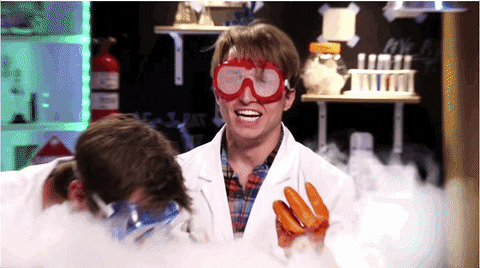

Bill needs to find out what it is he has accidentally put his right hand into as he looks on over to a large black lamp, Bill quickly outstretches his left as he reaches over and switches the lamp on. (A loud click sound is heard) Frankenstein continues as he say's with frustrated anger "Take that off" Zombie growls loudly - Dr Logan is indicating that he is removing clothing from the irate zombie
without it's express permission. Logan always starts from the very beginning in his impossible quest to domesticate the undead ghouls. (A form of breaking in similar to a young thorough bread horse)



All is suddenly revealed as a bright luminescence saturates the ghoulish darkness of the laboratory. Lamp wobbles slightly) Bill takes his left hand away from the light as he looks down to examine his hand. Bill is shocked to find that his fingers are smothered in blood. (Blood drips from his fingers) A white sheet below Bill is also stained with a large amount of blood also. Logan shouts out again "Take that off!" as he refers to another ripped and shredded garment" Zombie continues to growl - A few seconds pass as Bill tries to fathom where the blood has come from. Bill moves his bloodied fingers slightly away from him as he looks down at an autopsy table that he may not of known he was standing next to. (Tape has sidetracked Bill) Bill slowly raises his head as he focuses his eyes on something that is under the white and bloodied sheet. Bill is confused as his mind goes into overdrive,



Bill slowly lowers his left hand over the white sheet as his intentions are now to lift the sheet up and away as his curiosity takes over. Logan shouts out again with even more anger, "Take that off!"

Logan say's with impatience - "Five minutes, mother." Bill's hand reaches the freshly soiled sheet as he quickly snatches it away with his fingers. (Low level rustling sound is heard)
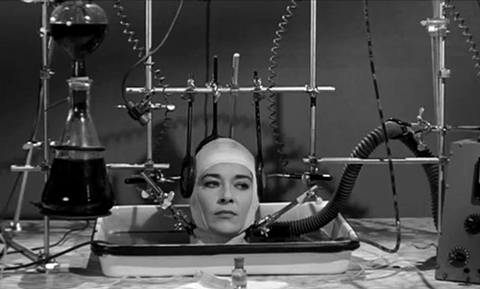

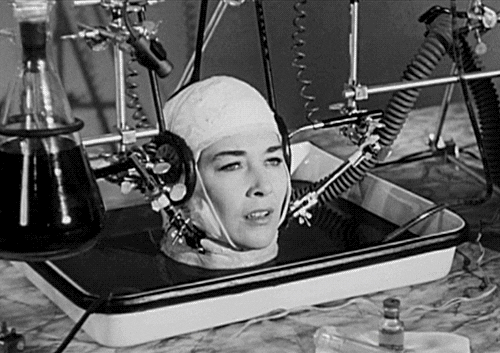
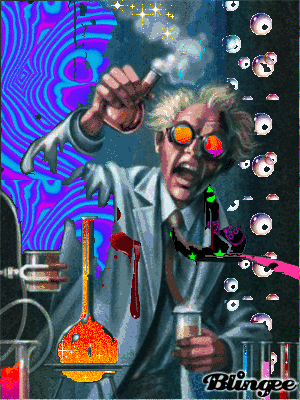
To McDermott and Sarah's complete and utter horror a severed head is hiding underneath the bloodied sheet. The decapitated head has a striking resemblance to Pvt Johnson who was accidentally killed earlier on by Pvt Miller. White, Red, and Green electrodes have been inserted into the side temple of the dead soldier in an attempt to reanimate him. To make matters much worse and distressing Pvt Johnson's mouth is moving around with a life of it's own. The mouth slowly opens before bending left and then closing slightly. Johnson's eyebrows slowly hunch up with an evil and uncontrollable force. Frankenstein is heard again out of the dictator machine, "Logan speaks with a persuading tone of voice "Just five minutes." (A popping sound emanates out of the head) Frankenstein does not have this name for the fun of it and now Bill and Sarah know that the good doctor has certainly lost the plot and has stepped way out of line. Dr Logan has sneakily been down to the corral cave system on his own initiative to collect a zombie specimen. As we know both zombies that were caught earlier have been killed and are no use to Dr Logan. (Logan prefers a fresh kill) He has taken Pvt Johnson's body and brought it back to his laboratory for pure science experimentation without the permission of Captain Rhodes. Logan needs a constant supply of undead carcasses for his work, if Captain Rhodes finds out about this Frankenstein is going to be in big trouble.



Sarah is shocked to the core as she stands motionless and in deep contemplation, "Suddenly Sarah speaks out with a slow and quiet tone of voice as she tries to accept what she is looking at, "Oh, My God" Dr Logan is only human like the rest of the scientists and is not immune to the abuses and terrible hardships everyone has to endure. Dr Logan is breaking protocol but nothing seems to deter him from his strong passions and dedicated progress. From the tape recording Dr Logan must of had a sheltered childhood, he developed a strong bond with his mother and grand father, unfortunately he was bullied at school and became a bit of a loner. He has deep inbuilt mental obstacles he wants to conquer but is also an extremist who will always try different ideas in his quest to succeed.
McDermott looks on over towards Sarah with deep fear and questionable thoughts about Dr Logan and his radical procedures. Bill suddenly turns and looks back down at Pvt Johnson's reanimated head. McDermott is finding the situation hard to bare and knows deep down that he has to change his sleeping arrangements from inside the Seminole Storage Facility before it's too late. McDermott's mouth shakes and gyrates with an uncontrollable spasm of emotions. Bills eyes are almost popping out of his eye sockets as he struggles to take in the grotesque sight in front of him.


Pvt Johnson's mouth has now opened much wider as the top lip contorts and pushes up from the far corner, A wet squelching sound is heard as Pvt Johnson's bottom jaw slowly closes as the top and bottom lips almost touch one another. Johnson's eyes veer left then slightly up then down in unison as it stares out a blankness of pain and suffering. Sarah repeats her words but this time she sounds even more distressed and shocked. "Oh My God!". Johnson's severed neck indicates Logan rushed the procedure and has not treated Pvt Johnson's corpse with any dignity or respect - (Shame on Dr Logan)


Sarah is becoming restless as she begins to breath in and out loudly unable to look at Pvt Johnson's reanimated head any longer. Suddenly Sarah quickly runs off from her standing position as a strong urge feels her mind. Frankenstein continues from the tape machine, "Fathers talking there's a strike". His words start to have little meaning as the tape continues.

Sarah rapidly runs across the floor to the other side as she violently slams her collection bag down onto a metal panel that juts out from the main workbench just below. A loud clank of metal is heard) Dr Logan sounds sad and distressed "I wouldn't wear one of fathers soldiers."

As Sarah slams her bag down she grabs the dictator machine with her right hand. Bill watches as Sarah becomes angry and frustrated at the deceitful Dr Logan, his voice, and Pvt Johnson's severed head.



Sarah rapidly raises the dictator machine in her right hand as she continues to hold onto her green army camouflaged bag. Suddenly Sarah swings her right hand at speed and with all her might smashing the dictator machine down hard onto the soiled floor below. Sarah grimaces as the tape device smashes into several pieces that scatter over the bloodied and soiled floor. (A loud sound similar to breaking tiles is heard) - Severed head opens mouth wide at speed, Eyes flit at rapid speed from left to right.

Bill looks forward fleetingly then back to Sarah, Sarah looks down at the moving head of Pvt Johnson as she pulls open the Velcro flap of her gun belt pouch at speed with her right hand. A loud sound of moving metal parts is heard as Sarah releases the safety catch and aims her weapon directly at the severed head of Pvt Johnson. Sarah's hair shakes slightly -

Sarah grimaces and screams out slightly from the terrible image in front of her, Sarah aims directly at Pvt Johnson's head and is moments away from shooting it in the head to end it's misery.

McDermott suddenly shouts out loudly with a dangerous concern as he say's, "No, Sarah! "Don't!" Bill rapidly makes his way over to Sarah as he reaches up with his left hand and pushes Sarah's hand away from Pvt Johnson's head. Bill wraps his arms around the traumatized doctor as he attempts to stop Sarah from destroying the reanimated ghoul.

Bill speaks out again as he tries to reason with Sarah and say's, "It'll just bring out Rhodes and the men. Sarah has become very emotional and angry after seeing the disgusting sight of Pvt Johnson. A loud gun shot would travel out of the laboratory and all around the facility.

McDermott grimaces as Sarah struggles to free herself from Bill's strong grip, Sarah whimpers loudly - Sarah's red hat wobbles on top of her head as McDermott maintains pressure. Bill shouts out "Leave It Be!". Sarah closes her eyes as she twists her body to the right as she looks up slightly in extreme distress. "Bill shouts out again "Leave It Be" as he attempts to quell Sarah's frustrations. Sarah becomes silent as she listens to McDermotts wise words. Sarah contemplates her thoughts. Bill looks on down at the moving head in complete disbelief too.

Sarah bends her head down as she shuts out the laboratory momentarily, Bill continues to look down at Pvt Johnson's head as he say's "Let's Go". Bill turns his head as he looks to his right and say's with strong conviction, "Let's get outta here"

McDermotts eyes widen with fear as he breathes heavily from the stresses he is witnessing, Bill turns his head even more as he stares ahead towards the exit door. McDermott then say's with a serious tone of voice, (Bill squints eyes rapidly) "I'm beginning to think we should take that helicopter (Bill looks up at the ceiling) before somebody else does. Sarah breathes in deeply -

Suddenly Sarah and McDermott turns there heads and look at each other with serious concern on there faces. Sarah is beginning to believe McDermott as she looks into his eyes with a worried and fearful expression.

McDermott continues to hold onto Sarah's gun with his left hand as he looks down at the table that has Sarah's collection bag on top. A loud crunching sound is heard as Bill disturbs the pills and other items Sarah has taken from the far drawer as he picks the bag up with his right hand. The severed head of Pvt Johnson continues to move all by itself as the mouth contorts and the jaw closes up slowly. The ghouls eyes veer to the left and flit rapidly.

Bill quickly looks back up at he focuses his attention on the exit door, Bill instantly escorts Sarah out of the grisly laboratory as they make there way back to Miguel and Flyboy. McDermott maintains his grip on Sarah's gun as he pushes her gently from behind with his right hand. Light and rapid tapping of feet is heard as the two survivors leave the room.

Harry Harlow, the Torturer of Monkeys
An American psychologist named Harry Harlow wanted to find out what is love and to that end, he chose the very strong bond between mother and child. This led him to study babies of rhesus monkeys as well as their mothers, to discover the dynamics of the great emotion, a truly noble effort. Now, what was this scientist's madness? Harlow equipped his lab with various instruments of torture one of which he chose to call the Rape Rack. Actually, this is a machine that helped in forced mating of monkeys. Ironically, he came to the conclusion that the best way to study the true nature of love was by means of torturing monkeys. He also had another contraption that he used in his experiments; the Iron Maiden.

Cloth vs. wire mother
Harlow's Studies on Dependency in Monkeys.
However, Harlow's most contentious experiment was done using a device that he lovingly called the pit of despair. He placed an infant monkey in a narrow isolated cavity for a year, lacking contact with any other creature, which resulted in the little animals turning psychotic, without any hope of recovery. In this way, he discovered what love is. So in his own words, love means the opposite of the emotion people feel when they have been locked up in a small dark chamber without company for a year.



Sidney Gottlieb: The Toxic Scientist
Sidney Gottlieb was a psychiatrist serving the US Army. He had a doctorate in Chemistry from the prestigious California Institute of Technology. He served the CIA at the time of the Cold War, making use of his considerable knowledge in biochemistry to help the US to be one step ahead of the malevolent Russians.
The Madness:Ironically, Gottlieb used his scientific expertise to amounted to what he called "poison everyone." For instance, it was he who suggested that Fidel Castro's shoes should be soaked with the chemical thallium to make his beard lose all the hair as if the Cuban dictator's beard was what gave him so much power. He also came with the idea of doing away with Castro by poisoning his cigar, fountain pen and wetsuit. Unfortunately, his later 'poisonous' ideas were discarded by the CIA.In order to show that he had more than mere poisons up his sleeve, he tried to prove he wasn't just a one-note guy, Gottlieb, later on, tried to eliminate the Congolese prime minister and a general from Iraq using neurotoxins which are unlike poison. Mind Control and LSD: While he was the director of MKULTRA, a project designed to study ways to control minds with LSD. When the CIA asked him to show if the drug could break the minds of men during the process of interrogation, he with fellow researchers went on a crazy acid trip for the sake of science. Soon he wanted to try his experiment on a lot of people without telling them. Soon Gottlieb was going around his country, sneakily adding LSD in the drinks of people and monitoring the effects. In fact, he used junkies and sex workers for these studies because none would believe them if they complained about this mad scientist who randomly drugged US citizens.

Fidel Alejandro Castro Ruz 13 August 1926 – 25 November 2016) was a Cuban communist revolutionary and politician who governed the Republic of Cuba as Prime Minister from 1959 to 1976 and then as President of the Council of State and Council of Ministers from 1976 to 2008. A Marxist-Leninist and Cuban nationalist, Castro also served as the First Secretary of the Communist Party of Cuba from 1961 until 2011. Under his administration, Cuba became a one-party communist state, while industry and business were nationalized and state socialist policies were implemented throughout society.

Giovanni Aldini: Electrocution Man
Giovanni Aldini, the nephew of Luigi Galvani, the father of galvanism, loves to connect things to batteries. For most of his life, he was working on the medical possibilities of galvanism. The Austrian emperor awarded him the Knight of the Iron Crown, in recognition of his services to the cause of science.


Aldini journeyed around Europe with a weird circus. He combined horror with science to create dramatic spectacles by connecting electrodes to animal carcasses and human corpses, gathering immense crowds. This is because, in the Europe of the 19th century, people didn't have much of violence and horror in their day to day lives.
Later in London, Aldini administered strong electrical shocks to the trunks and heads of various domestic animals using batteries. The onlookers saw the eyes and jaws of the animals moving like they had come alive.
In 1803, Aldini came out with his most infamous experiment. He exhibited the body of a hanged murderer named George Forster. Displaying Forster's body for the public to see, he charged the face of the body with high voltage electricity, and it began to move and twitch, with his eyes and mouth opening, looking as if alive. As if this is not enough, he stuck an electrode in the corpse's anus after which the body began to punch and kick so that people thought he had come alive and shouted to hang him again, to hang a body already dead.



Illya Ivanovich Ivanov, the Soviet biologist was well known for creating hybrids of animals. He combined a donkey and zebra and created a zonkey. Then he went on to create a hybrid of a cow and antelope that gave milk and could run fast.
One day Stalin ordered Ivanov to come up with a super race by creating hybrids of man and ape to be turned into a slave army. Stalin's aim was to conquer the whole world for communism, with this hybrid race, according to a Scottish newspaper.
The French too joined in and in 1926, in the African city of Conakry, with the blessing of both governments, Ivanov inseminated three chimpanzees with human sperm. Much to his chagrin, none of the apes became pregnant.
Reversing the Experiment Ivanov came to the conclusion that his experiment was unsuccessful because he did it the wrong way. So he tried to inseminate a human female with ape semen. In 1929, he gained support from the Society of Materialist Biologists. Soon he got female volunteers who were willing to undergo the experiment. He tried to get help from Rosalia Abreau, a rich Cuban lady who had an extensive chimpanzee menagerie in Havana, for ape semen. Unfortunately, the news of this spread and the Ku Klux Klan intervened and closed down the project.


MEET Britain's second ever Zonkey - an adorable cross between a zebra and a donkey. Zippy, an ultra-rare Zebra-Donkey crossbreed was born on October 2 on Kristine Turner's 55-acre farm in South Barrow. His mother Ziggy, a six-year-old zebra, was bought for £10,000 from Germany and shares the fields with nine donkeys. Despite desperately wanting Ziggy becoming a mother, Kristine gave up hope years ago - until Rag, a four-year-old donkey, showed interest. There is thought to be only one other zonkey in Britain, called Zambi, which lives on a donkey sanctuary in Shropshire.
Mum-of-two Kristine, 39, said: "I've always wanted it to happen but a few years ago I gave up hoping.
"Raj and Ziggy have been on the farm for years "Ziggy has always been a bit porky so I didn't notice she was getting any bigger. "It was a complete surprise.
"Last month I opened my bedroom curtains, which look onto the farm, and I just saw this little foal sitting up staring my way. "I was in complete shock.
"I ran downstairs in my PJs, put a coat on and went over to see him.
"He seemed like a right little character and has had a personality from day one.
"He's half a wild animal so he'll nip and kick me a tiny bit but in a cheeky way. Then he'll dash off. He has quite a fitting name really.
"He's calmed down a bit now as he lets me brush him.
"Ziggy has really taken to motherhood and she's a great mum.
"He's never out of her sight. They wander round the farm and do everything together.
"Rag tends to keep out the way.
"It was a completely natural process. It wasn't as if I forced them together and was trying to engineer it.
"I bred Rag on the farm four years ago so I had years thinking it was never going to happen - despite really wanting it too.
"I'm just so happy. Zippy is just a little miracle."

Dr. Delgado, the Mad Physiologist
Dr. Delgado was a Spanish physiologist with an MD degree to his credit. He served in the medical corps during the Spanish Civil War as a Republican. In 1946, he left for the US and got a fellowship at the University of Yale where he studied brain stimulation using electricity which is another way of saying mind control. Delgado invented a device called Stimoceiver or what euphemistically known as the Brain F*** Switch. The Brain F*** Switch was basically a remote brain stimulator and monitor that functioned via a transmitter placed in the 'patient's' head. It sent electrical signals that induced responses in the animal or human brain. He began with cats, then with monkeys and finally human beings, not to mention mental patients. With his Brain F*** Switch, he could manage behavior and as such could arouse all types of emotions including pleasant sensations, strange feelings as well as visions. One day he traveled to Cordoba, to stand before an angry bull that raced to charge him. In fact, he was clever enough to install a transmitter in the bull's head, in advance. As the bull was about to reach him, he activated his Brain F*** Switch and the vicious creature suddenly stopped in its tracks, calming down, pausing. Delgado very well could have made the world obey him, for, with his transmitter and a crazy mind, the sky was the limit. The wonder of the matter is that if he had done so, none would have suspected anything untoward.







Dr. Bryukhonenko, the Canine Killer
Dr. Sergei Bryukhonenko, a Russian scientist who lived while Stalin was at the helm of the USSR. The doctor had invented the primeval heart-lung machine called the autojektor which was used to do the first ever open heart surgery in the Soviet Union. Bryukhonenko also headed the Research Institute of Experimental Surgery a Russian experimental surgeon, no less. However, this happened to turn into an unimaginable scenario of abject horror. In fact, this heart-lung machine was supposed to maintain life by artificial means. This means that this machine could not be used in a dead animal but live ones, this time a lot of poor doggies. So as time passed, Bryukhonenko's research lab became filled with 100s of dead dogs. Then he went on to conduct a host of controversial experiments but severing dogs' organs, connect them to his contraption to sustain them alive out of their bodies. However, Bryukhonenko's most infamous experiment was recorded in video and titled "Dog's Head." The video shows the freshly cut off head of a dog placed on a table and connected to his heart-lung machine. This brought the dog's severed head back to life. What else to call this but the height of madness!

Warning Distressing Footage - Russian Dog Head Transplant Experiment.
Dr. Robert J. White, the Crazy American Surgeon
Dr. Robert J. White, the American surgeon was noted for his knowledge in transplantology. He had been engaged in research on the human brain and nervous system for several years. This led to the discovery of the cooling process occurring in the spinal cord.
In 1962, Dr. White became the first ever scientist to be successful in removing a dog's brain and keep it alive, fully separated from its body. The canine brain was connected to a brain wave monitor that showed that it was active still. Not satisfied with this, White transplanted a dog's brain onto the neck of another dog in 1964. However, the doctor was foolish enough to place the brain on the neck and not the skull.
After a decade or so, White transplanted a monkey's head onto another monkey's body. After repeating his experiment, White proved that the transplanted monkey heads were able to survive for an indefinite period in the body of the new host. However, he had to euthanize the poor creatures as they were paralyzed without exception, from neck down. In fact, this more than amply proves that contemporary medicine cannot mend any damage occurred to the nerves as a result of the severing of the spinal cord during the process of transplantation.

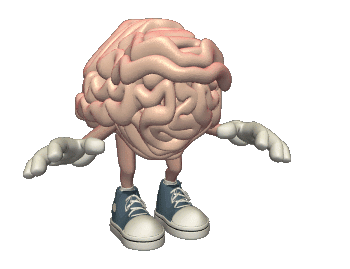

It has been five years since I started my research on anatomy in 19th century Belgium, but I remember my first visit to an anatomical collection like it was yesterday. It was the beginning of autumn and the temperature was cool enough to cause a slight numbness in my hands. I was not yet used to the piercing smell of alcohol and formaldehyde; a smell that soaked into my clothes and skin, and that I immediately associated with death. Most of all I remember the fetuses. Dozens of jars of human fetuses packed four or five deep on plain metal shelves. As I rearranged them carefully to be able to look at them, they rocked on the rippling preservation fluid. Of course, there were other items on the shelves —a jar with ovaries, a preserved heart, all kinds of bones— but they were less numerous, and their containers and preservation fluid suggested that they stemmed from the 20th rather than the 19th century.

.jpg)

Naive as I was —a newly-come PhD student in the beginning of her twenties— I figured that 19th-century anatomists must have been particularly interested in fetuses. I even found some evidence to support this claim: Cambridge archeologists had argued that fetal and infant remains were much more likely to be curated long term in anatomical collections; meeting reports of 19th century scientific societies showed that anatomists encouraged their former students to send “interesting” miscarried or stillborn fetuses to them; and snippets from hospital archives revealed that many women who died in hospital were autopsied in the hopes of finding fetal remains.

But then I found the original 19th-century inventories of the anatomical collections I visited. There were indeed long enumerations of fetal preparations. Yet to my surprise there were also mountains of pages on other body parts and types of bodies, such as preparations of the sensory organs and the respiratory system, and a large collection of skeletal remains from different “races”. It became clear that anatomists in 19th century Belgium had not been particularly interested in fetuses. The development of the fetus was but one of their many interests. It just happened to be that the jars containing fetuses remained in collections until today, whereas the other preparations had disappeared. To give one concrete example: it is estimated that the anatomist Adolphe Burggraeve (1806-1902) and his aide Edouard Meulewaeter made over 200 preparations per year. Only three remain today. The most well-known is a newborn child dressed in a white christening gown, lauded for its rosy cheeks and natural skin tone.

Anatomist Adolphe Burggraeve
If these fetuses do not tell us much about 19th-century scientific interests, then what can we, as historians, learn from them? Most obviously, it has taught me to distinguish between historical collections and what is left of them today. Remaining specimens are not representative of the collections to which they once belonged. Historians of anatomy have to broaden their view, and scrutinize what archeologists have called the “missing majority”. In fact, studying missing anatomical specimens, and the ways in which they have been disposed of, cannot only reveal much about changing research agendas, but also about changing standards and sensitivities with regard to the preservation and use of human remains in collections. Most importantly, the preservation of these fetuses tells us something about historically rooted assumptions about the social value of certain human remains. Scholars such as Susan Lawrence or Lynn Morgan have drawn attention to the varying social value of different parts or types of bodies. Whereas we believe that human remains clearly embodying a sense of identity or personhood should be either kept or disposed of in meaningful ways, we are largely indifferent towards the treatment of other bodily materials, such as tissue samples, hair, or vials of blood. In a similar vein, differences between historical anatomical collections and what is left from them today might teach us much about relations between body and personhood, and about what it means to be (dis)qualified as human.

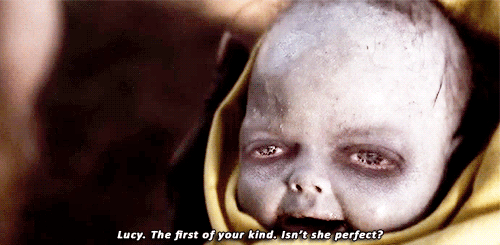

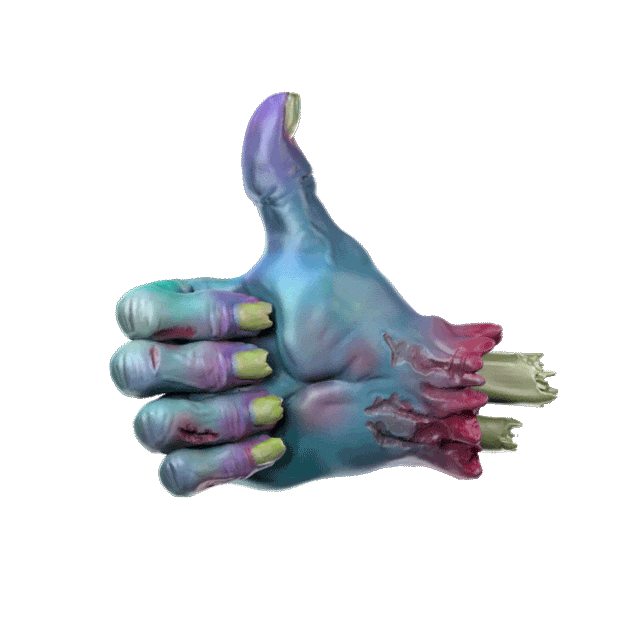

In the Brussels City Archives, I found requests to bury “jars with organs”. At least until the 1940s, discarded anatomical preparations were brought to the cemetery, where they were buried anonymously, together in a grave. It explains why I was unable to trace most of the preparations that filled the pages of 19th-century inventories. However, I also discovered that anatomists had to ask the city council for special permission to preserve fetuses after six months of gestation. The law described that they had to be buried individually in a separate coffin or alongside their mother if she had died during childbirth. Whereas “jars with organs” could be buried anonymously, fetuses had to be “decently” disposed of because they had a different social value. Perhaps fetuses remain in collections because we were —and are— unable to throw them away.
Featured image credit: Science & Technology Fair 2011 – Kolkata 2011-02-09 0844 by Biswarup

FRANCIS CRICK (1916-2004)
Along with James D. Watson, Francis Crick will forever be remembered as one of the discoverers of the very structure of DNA. The duo met while working at the University of Cambridge and in 1962 received a Nobel Prize for their scientific work. Crick was arguably among the finest minds in science, which is what makes his later beliefs all the more difficult to fathom. At some point in the 1970s, Crick became an advocate of one of the weirdest pseudoscientific theories of all time – a theory so out there that if someone on the bus were to suggest it to you, you might be tempted to edge away from them quite quickly. The premise of "directed panspermia" is that life on Earth was deliberately seeded by extra-terrestrials – an idea that seems more like the plot of a sci-fi film than anything based in methodical scientific research.
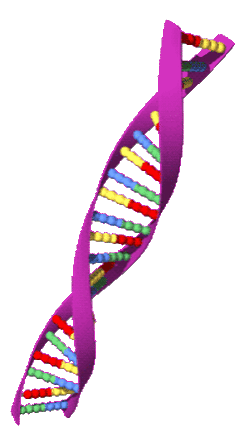





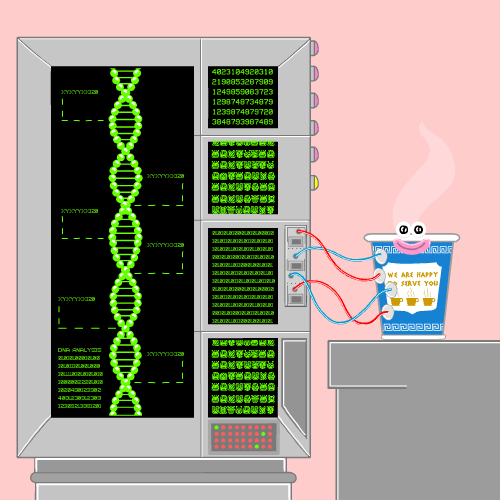






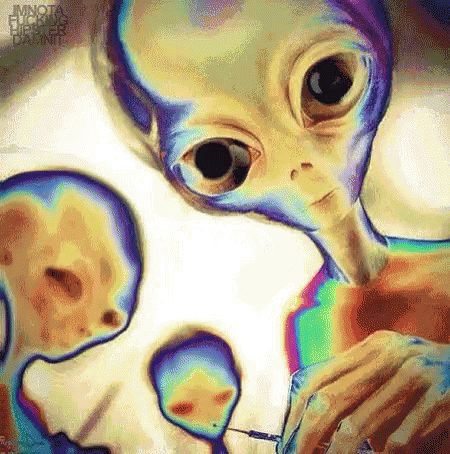




WILLIAM BUCKLAND (1784-1856)
William Buckland – an alumnus of Corpus Christi College, Oxford and a contemporary of Charles Darwin – is remembered for being the first man to pen a complete description of a fossilized dinosaur, the Megalosaurus. In his spare time, however, he was also a man who insisted on dining on everything. And we do mean everything, including roast hedgehog, potted ostrich, panthers, porpoises, puppies, and even bat urine; garden moles, though, were apparently a bridge too far. However, perhaps Buckland's greatest gustatory achievement is his reportedly having eaten the shrunken heart of King Louis XIV – a distinction that arguably overshadows his account of a Megalosaurus. Perhaps any scientists wishing for a place in the history books should give up the experiments and get chewing on anything that crosses their path. Then again, perhaps not.


STUBBINS FFIRTH (1784-1820)
Stubbins Ffirth was a University of Pennsylvania researcher fixated on one particular scientific scheme – and a very dangerous one at that. As a trainee doctor, he became obsessed with the idea that yellow fever was non-contagious, to the extent that he went to great extremes trying to prove it. Armed only with a trusty blade and his incessant desire to find the truth, Ffirth first sliced open his arms and smeared vomit from yellow fever patients into the wounds. When that made no difference, he poured the vomit in his eye, drank some of the vile liquid, fried the stuff and breathed in the fumes, and – in a final act of madness – covered himself with blood, urine and saliva from infected patients. Ultimately, Ffirth proved his theory, insofar as he didn't get sick. However, we now know that this was as much down to him taking samples from late-stage patients who were past the point of contagion. In other words, Ffirth swallowed infected vomit but didn't shed much new light on the disease.


JACK PARSONS (1914-1952)
The story of rocket scientist Jack Parsons is so monumentally insane that it's tempting to think it's all the product of a deranged Hollywood scriptwriter's imagination. However, the truth of the California Institute of Technology researcher's personal life is well documented. In 1939 Parsons converted to Thelema, a philosophy-cum-religion developed by the famous occultist Aleister Crowley. Parsons together with his housemates were spotted on a number of occasions dancing practically nude around a fire in the garden, in an apparent pagan ritual. At other times, he joined up with Scientology founder L. Ron Hubbard to attempt to raise the mother of the Antichrist; to do this, Parsons masturbated while Hubbard wrote notes. The pair also believed that they could summon spirits, so Hubbard intoned while Parsons and his mistress made love. And when Hubbard later absconded with Parsons' girlfriend, the scientist reported that he was trying to hex his foe. Parsons was eventually killed in an explosion that some have suggested was down to a magical experiment.

Occultist Aleister Crowley


Scientology founder L. Ron Hubbard
ANOTHER VERSION OF THE STORY.
Jack Parson (John Whiteside Parsons) was a researcher on rocket propulsion at the prestigious California Institute of Technology. He also has the rare distinction of being the associate founder of the well-known Jet Propulsion Laboratory. However, he has a crazy side to him as he happened to be a true dabbler in the occult.
However, Parson didn't keep his passion for himself. He got some creepy tattoos and conducted orgies occasionally with a line of black candles burning around him in a circle. He followed Thelema a kind of spiritual philosophy governing human life espoused by a person called Aleister Crowley and was the latter's sardent student and even leading a secret occult organization located in California.
As time passed he began to invoke the Greek mythological deity Pan before every rocket was tested as he believed that the half-man half-goat god was characterized by high aptitude in technology.
To thicken the plot, the notorious and publically disgraced Ron Hubbard was Parson's "magical" friend. Together they engaged in a ceremony named Babalon to summon a live goddess, but without success. Soon Hubbard cheated Parsons of a huge sum of cash to publish Dianetics, the bible of the movement called Scientology. Parsons died before he could see the advent of Scientology, as he was killed in a violent blast of unstable chemicals that lay around in his lab.

The long maze like constructed corridors are brightly lit but provide little knowledge on the horrors that lay awake on the other side of the worn and dirtied grey painted doors.

Suddenly McDermott and Sarah come casually walking around the corner as they make there way back to Miguel. A light tapping of feet is heard - Sound score consists of a repeated up and down scale of keys with occasional cymbal crashes. Suddenly a door is heard opening and then closing in the distance, The sound causes Sarah to look at McDermott as the pair stop dead in there tracks.

Sarah begins to step backwards as she places her left hand onto the side wall, Bill also takes a step back before turning anti clockwise as he follows Sarah back around the corridor wall.

McDermott stands just a few inches out from the wall as he waits patiently to see who it is who has just come through a door.

A few seconds later and all is revealed as Frankenstein appears in the corridor from his right, He is carrying a large silver bucket in his left hand which he swings out in front of him and takes hold of with his right hand. Sound of metal is heard -

Dr Logan immediately places his left hand inside his left side jacket pocket momentarily as he continues walking along. Logan's soiled white garment sways softly from his movements. Logan's shadow appears on the glass panel to his left as he walks down the corridor.

Logan lifts the silver bucket up higher with his right hand as he fumbles with some keys to the locked laboratory. The bucket slides gently past Logan's garment as it lifts up the bottom slightly. Logan stands by the door as he attempts to find the right key.

Bill watches with intrigue as Dr Logan goes about his business, He is silent and motionless as to not disturb the good doctor. Suddenly McDermott quickly turns his head slightly left towards Sarah as he indicates to her with a nod that she should have a look also.

Suddenly Sarah appears in front of McDermott as she also curiously watches Logan from a distance.

A low level wooden sound is heard as Logan fumbles with the lock, A sound of jingling keys is then heard as Logan rapidly places the set back into his left side jacket pocket.

Logan quickly brings his left hand back to the door knob as he slowly pushes open the unlocked door.

A door catch is heard releasing as Frankenstein enters into the laboratory, He is slow and methodical as he carefully pushes open the door.

A tinny high pitched metallic sound is heard as Dr Logan places pressure on the silver knob with his left hand. Blind cord sways gently.

Frankenstein is literally covered in ghouls blood from head to toe but doesn't seem to mind, Logan shouts out loudly with enthusiasm as he say's, "Hello, Bub". The word Bub is lengthened as Logan expresses his friendly attitude towards the captive zombie. The sound of wood is heard as Logan shuts the door behind him. Dr Logan smiles with intense pleasure and satisfaction.

A light tapping of feet is heard as Logan immediately makes his way inside the room where Bub resides.

The camera quickly pans left to reveal 4 small black lamps and a plethora of charts and notebooks that Dr Logan regularly inks in for his pure science studies. A low level growling almost like a whisper is heard from Bub, A wavering trance feel synthesizer chord plays to provide the sound score. Bub has both of his hands raised to his ears as he holds a pair of stereo headphones, Logan swings out the silver bucket with his right hand as he places it down to a work surface with his left hand. Logans bloodied jacket lifts slightly at the right seem as the bucket is transferred (A loud tap of metal is heard) Logan turns his head as he looks on over towards Bub who has now lowered his left hand down slightly. Logan continues to hold onto the buckets handle with his left hand.

A low level squeak is heard as Sarah quietly and cautiously opens the door to the laboratory with her right hand. Sarah instantly releases her hand from the door as she walks forward into the room while raising her hands to her red safety helmet. A low level tapping is heard from Sarah and Bill's feet.

Sarah begins to twist her light that is attached to her helmet as she attempts to switch it off.

Sarah suddenly turns around in an anti clockwise movement as she looks to McDermott, Sarah is suggesting that he also turns his helmet light off as otherwise Dr Logan will become distracted and aware that the curious pair are watching. Logan can be heard from the other room as he shouts out loudly with excitement and praise "Mother is very proud of you". Bill raises his right hand to his helmet as he also switches off his light. Sarah turns back around clockwise as she makes her way over to the four black lamps observation worktop as she lowers both of her hands down.

Logan shouts out again, "Very, Very, proud indeed". Sarah stares out through the observation window as she pulls off her collection bag with her left hand and quickly places it down in front of her.

Bill looks down fleetingly before looking forward towards Dr Logan and Bub with curious intrigue. Bill sways slightly from side to side as he settles in next to Sarah. Dr Logan continues to praise Bub as he say's, "You did quite nicely today."

Bub stares ahead towards Frankenstein as he begins to growl with evil thoughts, Bub's mouth opens wide and contorts as he takes a side step producing a swaying movement. A loud click sound is heard -

Dr Logan smiles profusely with intense feelings of happiness and progress as he takes several fast steps forward towards his specimen. Dr Logan's tongue suddenly begins to move almost on it's own accord as it pushes up towards Logan's top right lip. Logan quickly closes his mouth as he takes his last step producing a skating sound -

Logan wobbles slightly from side to side momentarily. Logan is silent as he looks at Bub with a serious facial expression,

Suddenly Logan begins to slowly raise his right hand up towards Bub's face. Logan blinks once.

Bub stares at Dr Logan fleetingly as he tries to fathom what the Dr requires of him. Bub growls at low levels - Bub lowers his eyebrows slightly with confusion and undead eagerness.

Frankenstein continues to slowly raise his hand up and towards Bub's left ear. Suddenly Dr Logan pulls his bloodied hand back slightly at speed.

Logan is testing Bub's reflexes and trust as he slowly begins to raise his hand closer to Bub's left ear once again. Bub turns slightly as he stares at his master with a devoid set of emotions.

Frankenstein continues to get closer and closer to Bub's left ear as Bub stares at the Dr with undead thoughts of nothingness. Logan is virtually a split second away from making contact with the ghouls left earpiece which has been slightly raised above the zombie's left ear. Zombie veers it's eyes at Dr Logan's bloodied glove - Dr Logan has much faith in his specimen and is now getting rather intimate and personal with the ghoul. Bub could so easily bite Dr Logan and that would be suicide for the science experiments and Dr Logan's life.

Suddenly Dr Logan takes grip of the earpiece with two bloodied fingers, At the same moment Bub rapidly grabs hold of Dr Logan's wrist with it's left hand. (A loud whack sound is heard) Bub veers it's eyes towards Logan's arm and it's face changes to one of aggression and evil intentions. (After all Dr Logan has just offered Bub lunch) Headphones produce a plastic sound similar too jiggling two dice in a shaker from the forces of Bub.

Frankenstein suddenly shakes and grimaces from the rapid shock of Bub's unexpected actions. Logan twitches his eyebrows as he continues to hold onto the earpiece.

Bub begins to slowly look down at Dr Logan's arm with an undead fascination.

Bub grimaces as he scrunches his face and lowers his bottom lip momentarily, Bub begins to caress Dr Logan's arm with his right hand as his two fingers gently apply pressure to the flesh and muscle. Bub growls lightly but does not attack Frankenstein or attempt to bite his arm. Dr Logan has developed a close bond with Bub and this now shows, Logan is still taking a large risk with the zombie as it could attack at anytime.

Bubs headphones rapidly shake from the pressure of Bub's hands and the pressure from Logan's fingers. Bub looks back to Dr Logan as it's eyes open wider

Sarah and McDermott will be fascinated by Dr Logan's closeness to his subject, Bub does not attempt to eat Dr Logan's arm even though it's instincts want too.

Dr Logan is silent and motionless as his eyebrows hunch up slightly, Logan sweats as his eyes flit from left to right, Dr Logan is allowing Bub to continue his hold on his arm which is a risk similar to Russian Roulette or holding a Cobra in your hand.

Bub continues it's death stare towards Dr Logan -

A short moment passes and Bub begins to slowly slide his fingers away from Logan's arm. Logan growls softly - A sound of metal is heard from Bub's steel chain. Bub contorts it's mouth as it looks at Logan.

Frankenstein begins to smile broadly as Bub removes his fingers from his arm, Logan can sense a sigh of relieve that Bub did not attack him.

Logan breathes out as he raises his bloodied hand slightly before gripping hold of the left earpiece with thumb and index finger. Bub veers his eyes sharply left as he looks at Logan's arm once again. Suddenly Dr Logan gently pulls down on the earpiece so that the micro speaker sits comfortably over the zombies left ear for a truly stereophonic sound.

Dr Logan opens his right bloodied hand in front of Bub for a short moment to catch it's attention. Logan shakes his fingers rapidly.

Logan quickly changes his hand to a pointed index finger which he shakes to stimulate Bub's dumb mental capacity.

Bub begins to follow Dr Logan's finger as it shakes and lowers itself becoming almost horizontal. Logan continues to lower his finger as he dips it down and towards the table below, Bub follows with his eyes as it ponders on it's deceased and very dead brain cells.

Bub looks down at Frankenstein's bloodied finger as it directs the ghouls undead attention onto something resting on the surface below.

A cassette deck is resting on the table and is one of Bub's play things. Logan quickly presses his finger down onto the green play button with his bloodied finger.


A loud click is heard as the cassette deck is set in motion, Frankenstein has preloaded the cassette deck with a tape that contains the track, "Ode To Joy." By Beethoven. Music begins to emanate out of the headphones that Bub is wearing.

The loud sound of Beethoven has an instant and profound effect on the rotten piece of garbage, Bub's eyebrows begin to raise as the brain dead head slowly raises up, Bub stares ahead into the void as he tries to comprehend the human emotion.


Bub is unsure how and where the sound is coming from as it opens it's rotten mouth wide and contorts the lips as it stares ahead completely aghast.

Bub softly growls as Beethoven feels his dead heart and mind, Bub moves his bottom jaw as he contorts his mouth to one side.

Bub slowly raises it's hands up slowly as the sound intensifies the ghouls undead senses.

Bub could well of been a connoisseur of fine steak and classical music in his past life before infection, Bub continues to raise his decayed hands up to his ears as the music sounds out.


Bub growls once again as the sound waves eat into his ghoulish instincts, Bub is now touching the headphones with his hands as the classical piece plays through.

Bub looks up at the ceiling as his eyes widen with intense undead pleasure, Bub's right fingers slide down slightly just below the headset speaker. Bub contorts and bends his mouth right.

Bub softly growls once more as his fingers slowly slide down from either side of it's face. Bub blinks -

Bub lets out a low level puff of rotten air as he looks almost straight ahead, Bub moves slightly on his feet to his right as he blinks. Eyes veer slightly left into the void before looking forward.

Frankenstein is silent as he begins to smiley brightly at his specimen. Logan quickly raises his eyebrows with admiration and complete satisfaction for Bub who is showing great improvement.

Logan suddenly beems with intense happiness as he watches Bub listen to Beethoven

Bub moves his head around slightly as he continues to listen to the epic sound of Beethoven. But suddenly slides his bottom jaw left as his mouth contorts while staring at the observation mirror in the distance.

The experiment has still not finished as Frankenstein suddenly begins to shake his bloodied right hand out in front of Bub in an effort to capture it's attention once more. Logan rapidly shakes his hand and fingers just below Bub's face but Bub continues to stare ahead oblivious to his masters requirements. Logan raises his hand further as he begins to wave his digits right in front of Bub's eyes. Bub starts to follow Dr Logan as it moves it's head and stares blankly at the flurry of fingers. Bub growls a low level hum of evil.

Suddenly Dr Logan stops shaking his fingers as he instantly points his right index finger at a vertical angle while closing thumb and middle fingers together. Bub stares ahead unable to deal with the situation, Dr Logan begins to shake his index finger in an up and down motion which causes Bub to veer his eyes down and focus upon the tender flesh.

Bub follows Dr Logan's bloodied finger as he slowly lowers it down towards the tape cassette machine. Bub's head tilts down slowly, Evil thoughts flood Bub's mind for a fleeting second as his face grimaces and his mouth contorts with evil, Bub bends his head slightly left as he watches Logan's finger.

Bub oozes with a stagnant evil as it stares down at the cassette deck and Dr Logan's bloodied finger.


Suddenly Dr Logan presses down onto the red button which causes the tape machine to stop playing. (A loud click is heard)

Dr Matthew Logan's right index finger hovers over the green play button momentarily.

Bub groans loudly as he leans forward unable to comprehend the sudden removal of Beethoven and the beautiful sounds that tantalized it's rotten eardrums. Bub side steps as it's mouth contorts and looks over the top of the cassette deck and into the void.

Dr Logan begins to shake and wave his bloodied right hand in front of Bub to try and regain it's attention. Bub almost instantaneously begins to slowly raise it's hands up and back to it's ears - Bub groans loudly once more as it hungers for the return of Beethoven.

Ludwig van Beethoven (1770-1827) was a German composer and pianist, who is arguably the defining figure in the history of Western music. Ludwig Van Beethoven was born in December 1770, but no-one is completely sure on which date. He was baptized on the 17th. The earliest recorded piece that Beethoven composed is a set of nine piano variations, composed in 1782. Beethoven moved to Vienna in 1792, where he met influential composers like Haydn and began to compose in earnest. By 1796, he had begun to suffer from tinnitus and was losing his hearing. Beethoven composed his Piano Sonata No. 14 ('Moonlight') in 1802. The Third Symphony, known as the 'Eroica', was completed in 1804. It went on to redefine the symphony as a genre. The opening motif to the Fifth Symphony from 1808 is one of the most famous musical excerpts in history. The 'middle period' of Beethoven's career also saw him compose piano works like the Waldstein and Apassionata sonatas, as well as his only opera, Fidelio, which went through countless rewrites and revisions. Beethoven's Ninth Symphony, the 'Choral' from 1824, is another work of his that has remained infinitely popular. It was the first time that a composer had used choral voices in a major symphony.
Ill health and increasing deafness caused a drop in productivity at the end of Beethoven's life, but he still managed to produce important works like his 'Late Quartets' in 1825, which were wildly inventive for the time. Beethoven died in Vienna on the 26th March 1827 after a long illness that has variously been attributed to alcohol, hepatitis, cirrhosis and pneumonia. Beethoven composed only one opera, Fidelio, which took years to get right. He re-wrote one aria no fewer than 18 times and came up with four different overtures before deciding upon the one he liked.
Bub lightly holds the headphones from either side as it attempts to understand why food is moving at such high speed in front of it.

Bub moves it's bottom jaw to the left as it shuffles slightly on the spot, Bub begins to growl an almost distinguishable "Braaains"

Bub suddenly looks at Dr Logan with evil intentions.

Dr Logan is silent as he changes his hand signal back to an index ginger once again, Bub looks directly towards Dr Logan as he once again groans out loudly the frustrating call for "Braains". Logan shakes his finger in front of Bub to regain it's evil attentions. Bub moves from side to side gently.

Dr Logan slowly raises his head up slowly as he continues to maintain focus upon Bub who is now feeling rather hungry after all the mental activities he has had to complete. Logan veers his eyes slightly towards Bub's right hand as he points his index finger towards it. Logan is now trying to get Bub to focus it's evil mind onto it's own rotten flesh for a change.

Dr Logan continues to point his finger towards Bub's spiny hand as he tries to get Bub's attention.

Suddenly Bub turns his head as he looks at his own outstretched fingers.

All is silent inside the laboratory and there is no sound score - Dr Logan stops the pointing movement but continues to hold his finger up and towards Bub's hand and fingers -

Dr Logan slowly lowers his finger down towards the tape machine as Bub follows with it's rotten eyes.

Bub's jaw moves from side to side slowly as it growls at very low levels, Logan continues the slow movement of his finger as it makes it's way down to the table below.

Bub now has his index finger protruding out from his hand as he copies his masters movements. Logan is pointing his finger towards the cassette deck on the table below.

Both Bub's finger and Dr Logan's are traveling at the exact same speed of motion, Dr Logan and Bub are a team who play with nice things together.

Bub's finger continues to travel down until it touches the green play button on the cassette deck.

A loud click sound is heard as Bub pushes down onto the green play button, The tape machine automatically begins to play the tape once more as the sound of Beethoven emanates out of Bub's headphones.

Frankenstein is elated that Bub has completed the simple task as he smiles with delight. Logan instantly turns away from his specimen as he raises both hands in front of him and shakes them in an up and down motion momentarily. Bub stands to attention as he continues to listen to the dead classical music composer.

Frankenstein suddenly turns away from Bub as he makes his way over to his notepad so that he can write down some information regarding Bub's learning session. Logan swings his right hand out fleetingly as he smiles broadly. (The sound of Beethoven can be heard coming from Bub's headphones)

Frankenstein's arms waver up and down with an energized rhythm as he scuttles over to the silver table a few short feet away. (A light scuffling of feet is heard) Logan's soiled white jacket sways out at the bottom from the friction of his body movements. Bub is silent as he moves slightly from left to right and vice a versa. Bub looks on over towards Logan as he continues to enjoy Beethoven. Logan quickly bends down as he takes hold of a yellow pencil that has been placed on top of the white notepad.

Frankenstein quickly slides the notepad around with his left hand as he picks up the pencil with his right. Bub looks away from Logan - Logan places his left hand outstretched onto the notepad as he begins to scribble down important information onto the paper.

Dr Sarah Bowman and William "Bill" McDermott are mesmerized as they continue to observe Frankenstein and Bub undetected. Sarah is silent as her head moves gently from side to side, McDermott stares ahead flabbergasted at what he has just witnessed as he say's softly "I don't believe it". Sarah hesitates then replies softly "Logan's star pupil". Both Sarah and Bill are disgusted by Logan's actions after he stole Pvt Johnson's body and reanimated his head. (Beethoven is heard)

Frankenstein has completed his notes for the time being as he makes his way back over to Bub, (Turns away anti clockwise from table) Logan's white and soiled jacket puffs out and sways from side to side as he quickly steps back over. Bub is motionless as he stands with his head looking up and left in a state of classical connection.

Logan bends down as he places both of his bloodied hands onto the cassette deck that continues to play Beethoven. Bub shakes his head gently as it looks forward at a slight angle. Logan speaks out to Bub with zeal as he say's "Now, tomorrow.." A loud click is heard as Logan presses down on the red stop button)

Frankenstein rapidly looks back up to Bub as he slowly lifts himself back from the table and say's with a serious tone of voice, "We can play with these things again." Logan hunches his eyebrows - No sound score all is quiet -

Frankenstein's mouth opens as his tongue protrudes out slightly, Logan has a devious and devilish facial expression as he slowly backs away from his specimen. (A light scuffling of feet is heard)

Frankenstein holds the cassette deck with both hands as he continues to admire his prized zombie specimen.

Suddenly Frankenstein takes a short and rapid breath of oxygen as he say's with an excited tone of voice, "Now It's" Logan bends down slightly as his arms gently lower the tape deck down softly in his hands to express his words. Logan hesitates his sentence -

Logan's eyebrows flit up and down rapidly for a moment in time as he looks at Bub with a serious facial expression and say's "Time for your reward". Logan bends his head forward slightly as he emphasizes the word Reward. Logan smiles at Bub in silence.

Sarah and McDermott's are silent as there heads sway slightly as they continue to watch Frankenstein's unorthodox experiments, Logan can be heard emanating from a speaker that has been fixed to the observation rooms wall. He say's with encouragement "I brought you something.. good." (A tapping of metal is heard from the speaker system as Logan removes the cassette deck from Bub's table) Sarah and Bill are utterly engrossed at what they are seeing and may now doubt in there minds if they should of sneaked in to Logan's laboratory in the first place.

A loud clunking sound of metal and plastic is heard as Frankenstein quickly sets down the cassette deck onto the silver table in front of him. Bub is looking down as he slowly begins to raise his rotten right hand back to his headphones which are now completely silent and devoid of life.

Frankenstein quickly turns to face the large silver metal bucket that he brought in with him just a few minutes earlier. Logan slides up the silver carry handle with his left hand as he takes hold of the raised handle with his bloodied right hand. Bub is acting in a confused way as he tries to fathom why there is no sound from his left headphone speaker.

Logan carefully looks down at his hand and the silver bucket as he rapidly lifts it from off from the silver table, Logan turns in a anti clockwise motion as the bucket swings out with his right hand. (Low level clinking is heard as the bucket lifts up)

Bub suddenly snaps out of his musical aspirations as his hands instantly take on a new evil energy of movement.

Bub suddenly snaps out of his musical aspirations as his hands instantly take on a new evil energy of movement. Bub's mouth opens wide as he growls loudly with an intense craving for something Frankenstein is offering to him inside the evasive silver bucket. A loud snapping tension of steel is heard as Bub pulls violently on his neck collar and chain as he lunges forward towards Logan. Bub's internal undead instincts have now taken over as it growls with evil intentions. A long black phone cable attached to Bub's headphones rapidly swings out and onto the table below.



Bub almost focuses on his master as the excitement builds up inside the dead carcass. Bub instantly looks down into the bucket as it's mouth contorts and bends awkwardly, Logan quickly places the bucket down in front of his specimen as a loud metallic thud sound is heard. Bubs head moves slightly as the lips saliva - The silver handle falls over towards Logan creating another thud sound of metal - Frankenstein slowly slides the bucket forward a few inches with both hands almost gesturing the actions of a waiter serving a fine champagne in an exclusive restaurant. Bub is acting punch drunk as his senses explode with an evil delight. Bub stares down inside the bucket as Logan quickly backs away to observe the zombies actions.

Bub is silent as he looks inside the bucket, The ghoul may of learnt some table manners as it bides it's time with the offering. Bub side steps right on his right foot which causes a sudden rattling of chains. Bub slowly reaches up with his left hand as he takes hold of the headphones with it's rotten fingers. A low level and continuous synthesizer key is heard.

A loud clinking of metal is heard as Bub quickly slides down the headphones from it's head with it's left hand. Bub is punch drunk as it sways and stumbles on it's dead and rotten feet.

Suddenly Bub rapidly discards the headphones with his left hand as he continues to look inside the bucket, Bub is obsessed with the contents of the bucket and can't take it's evil eyes off not even for a second. A loud high pitched snapping sound is heard as the headphones rapidly descend to the soiled floor below. Bub's brain has instantly switched from Beethoven to something else in a split second. Only time will reveal what it is Frankenstein has given his specimen.

Bub is totally preoccupied with the contents of the bucket as his left hand precariously hangs over the top.

Bub growls lightly as his left hand goes inside the bucket at speed while he holds onto the buckets other side with his right hand.

A loud sliding sound of metal is heard as Bub suddenly pulls the bucket towards him at speed with both hands. Steel chain sways and wobbles from Bub's movements. Whatever is in the bucket Bub desperately wants.

Bub sways his head rapidly from side to side as the chain tightly wobbles in an up and down motion from the downwards forces of the ghoul. Bub slowly removes a large piece of red and bloodied meat not to dissimilar to barbecue spare ribs. Bub opens it's rotten and stench filled mouth wide as he raises his hand at speed with the tasty meat in hand. Bub leans up slightly as it begins to chew and bite onto the raw fillet. If only Dr Ted Fisher could have as much success as Frankenstein in getting the zombies to eat there meat only accounts to extreme jealously and envy on Fishers part.

Bub quickly raises it's left hand up to the meat so that it can get a firm grip on the raw offering. A wet squelching sound is heard as Bub munches into his reward. Long pieces of red flesh dangle off the main piece as Bub chows down. Suddenly two splats of blood land onto the table just millimeters from the side of the silver bucket. (Splat sound is heard)

Bub turns his head steeply right as it pulls hard on the bones and flesh with it's rotten teeth. A loud snapping sound is heard - The meat suddenly produces a white inner bone which causes the zombie's head to rapidly move forward. Bub's jaws are locked and loaded as it bites down with tremendous force, (Squelching sounds are heard)


Bub's head sways rapidly as it becomes completely possessed with the chunk of meat, Bub growls with evil delight - Another loud thud sound is heard as more red blood splatters down onto the table below at high speed, this time the thick substance has landed on the other side of the silver bucket.

Dr Sarah Bowman and McDermott are completely stunned and incredibly curious as they continue to observe Frankenstein and his patient. McDermott's eyes are open wide as he begins to question Dr Logan and his own morality, (McDermott squints slightly) Bill suddenly say's with a serious and curious urge to discover more, "What is that?" Bill is referring to the contents inside the silver bucket. Sarah is silent and motionless as she immerses and absorbs the ghoulish and evil images in front of her. Bill hesitates as he raises his eyebrows before saying with a serious and questionable doubt, "Is That?" (Bill is unable to finish the sentence) Bill has other ideas about the barbecue spare rib offering as his mind delves into impossible thoughts of evil and betrayal.

The ghoulish evil moves it's head from side to side with a terrible and evil force almost uncontrollable as it devours the meat offering. Another squelching sound is heard as another large splat of congealed blood rapidly descends to the table below joining forces with the other blood on the left side of the bucket from Bub's view.


A loud crunching sound is heard as the zombie pulls down on the meat with both hands, The meat begins to stretch and reveal muscle and tendons, The ghoul suddenly tilts it's head right as it continues to pull and chew on the stringy flesh. The zombies fingers are now covered with a thick red blood but it is completely oblivious nor worried about this slight hygiene problem.

Suddenly a large piece of flesh snaps off from the main piece as the zombies right hand jerks down rapidly, The zombie quickly tightens it's hold on the piece of meat that was in it's mouth with it's left hand. A loud snapping sound is heard as the meat in the ghouls mouth also breaks off causing the undead's rotten hand to violently lower down closer to the bucket. A large pool of blood appears on the right side of the silver bucket this time as the flesh snaps into three pieces.


Raw meat hangs out of the ghouls mouth as it holds a piece of bloodied flesh in each hand as it looks down. Bub is now smothered and covered in blood and flesh and small slithering pieces fall back inside the bucket from it's rotten hands.

Bub moves slightly as he raises both hands to his mouth before chewing on both pieces at the same time from each hand. Bub opens it's mouth as wide as possible as it stuffs the meat down it's throat.


Sarah suddenly say's with a soft and questionable tone of voice after watching Bub's table manners - "It can't be?" Bill continues to watch the horror show as his mind works some overtime.

Sarah blinks once at rapid speed as she continues to stare in through the observation window, Suddenly Sarah becomes rather nauseated and sick from inside as she say's with disbelief "Oh No" Sarah instantly closes her eyes as she shuts out the horror in front of her,

Sarah bows her head as she slowly turns away from the disgusting images as she say's " Oh Jesus" Sarah continues to turn herself away having seen and heard enough. Bill continues to watch the show.



